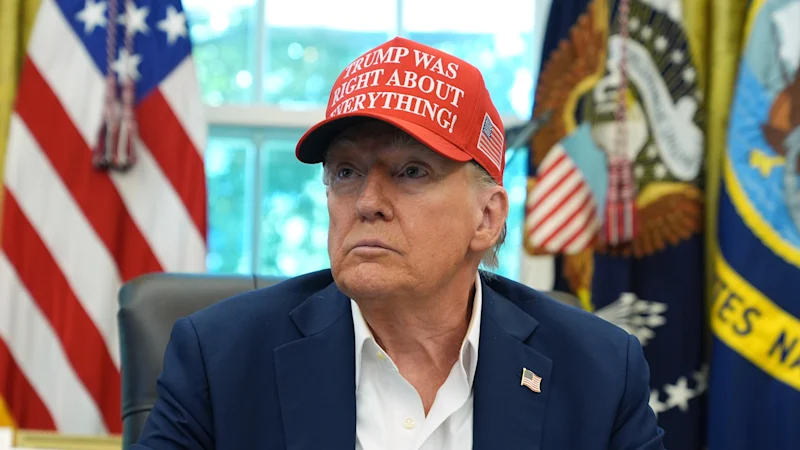
Not surprisingly, Brazil has exported more than 66 million tonnes of soybeans to China this year and now accounts for about 70 per cent of China’s soybean imports.
Last year, China imported about $US13 billion worth of soybeans from the US, with almost 1 billion bushels bought in the first eight months. This year, China has bought just over 200 million bushels from the US, while buying about 2 billion from Brazil.
American soybean farms, such as this one in Minnesota, are producing a record crop. But who can they sell it to?
Last year, as American farmers entered their harvesting season, China pre-purchased about 6.5 million tonnes of soybeans. This season? Not a bean. Instead, China has already agreed to buy 12 million tonnes from Brazil and Argentina.
The Argentinian tonnes are particular vexatious for the US farmers, given the Trump administration last month announced it would do “whatever it takes”, including a $US20 billion swap line, to shore up the Argentinian peso and the political fortunes of Trump’s friend and ideological ally, Argentinian President Javier Milei.
An unexpected defeat in elections last month in Argentina triggered US fears that Milei’s radical economic reforms – not dissimilar to Trump’s assault on the US bureaucracy – could be stalled by a hostile national congress at the midterm elections later this month.
The US announcement briefly halted a plunge in the value of the peso but, with the US intervention yet to occur, the peso has again weakened significantly amid intense speculative activity.
What really stirred up American farmers and some legislators was that the US announcement came almost at the same time as Milei announced a brief exemption for soybean and grains exporters from export taxes. For soybeans, it was an exemption from a 25 per cent tax.
That raked in about $US7 billion of hard currency within about 48 hours (after which the taxes were reimposed), most of it from soybean shipments to China.
US soybean production is centred in the Midwestern states, which have tended to be strongly supportive of Trump and his policies, except for tariffs. The farmers know they benefit from free trade and are suffering from Trump’s tariffs. They’d prefer to compete rather than rely on government handouts.
Trump, however, blames China, and posted on Truth Social last week that the soybean farmers were being hurt because China was, “for negotiating reasons only, not buying”.
America’s beleaguered farmers aren’t concerned about geopolitics. They are facing a glut of soybeans and other soft commodities, thanks to Trump’s protectionism.
“We’ve made so much money on Tariffs,” Trump wrote, “that we are going to take a small portion of that money, and help our Farmers.”
Trump has promised to discuss the de facto ban on imports of US soybeans by China at a meeting with Xi Jinping scheduled for next month, which is when the latest extension of the “truce” agreement the countries signed earlier this year expires.
Beijing knows how economically and politically powerful its tariff on US soybean imports is. Having now invested billions to end its dependence on the US for a critical input into its food chain by helping Brazil, Argentina and other South American countries develop their production and the infrastructure to export it, China is unlikely to be a large-scale buyer of US beans even if the tariffs were removed.
Soybeans could, however, provide powerful negotiating leverage over more strategics issues, like access to the most advanced semiconductors, or the US stance on Taiwan.
Beijing knows how economically and politically powerful its tariff on US soybean imports is.Credit: AP
China hawks in the US fear that Trump’s love of a deal and admiration for autocrats might see a sea change in the US-China relationship – a shift away from the past two administrations’ efforts to contain China and its technological development.
America’s beleaguered farmers aren’t concerned about geopolitics. They are facing a glut of soybeans and other soft commodities, thanks to Trump’s protectionism.
At the same time, Trump’s tariffs on Canada, which supplies as much as 85 per cent of America’s fertiliser imports, and on metals and machinery, are raising their production costs.
It’s not just the farmers, but their suppliers. John Deere, the iconic US leading manufacturer of farm machinery, has said the tariffs will cost it $US600 million this year. That has led to job losses in its US business and will inevitably show up in increased prices – even as demand from distressed farmers dries up.
Given the structural transformation in the global production base for soybeans, away from the US and towards South America, Trump’s financial aid will be a Band-Aid for the stresses his country’s farmers are experiencing. His tariffs will force a rationalisation of large sectors of the US agricultural industry.
This year’s bumper crop of soybeans, the farmers say, will produce a glut. That glut – and the losses the farmers are experiencing – are likely to be permanent features of the sector unless it shrinks to becoming essentially a domestic industry. Farmers, suppliers and America’s agricultural export infrastructure will be affected. Protectionism is a crude, two-edged sword.





